
Sales Path, within the Salesforce ecosystem, is a tool specifically designed to guide sales representatives through the stages of the sales process. It provides a structured approach by displaying the key stages and fields for each step of the sales cycle.
This feature is especially beneficial in ensuring that sales teams adhere to best practices and company policies while navigating through deals.
The primary purpose of Sales Path is to offer a visual representation of the sales process, making it easier for sales teams to understand and follow.
It aids in identifying critical steps and information required at each stage, thus reducing errors and improving the efficiency of the sales process.
How to Implement & use Sales Path in Salesforce
Implementing a Sales Path in Salesforce involves configuring a Path for a specific object. Follow these steps to set up a Sales Path :
Go to Setup
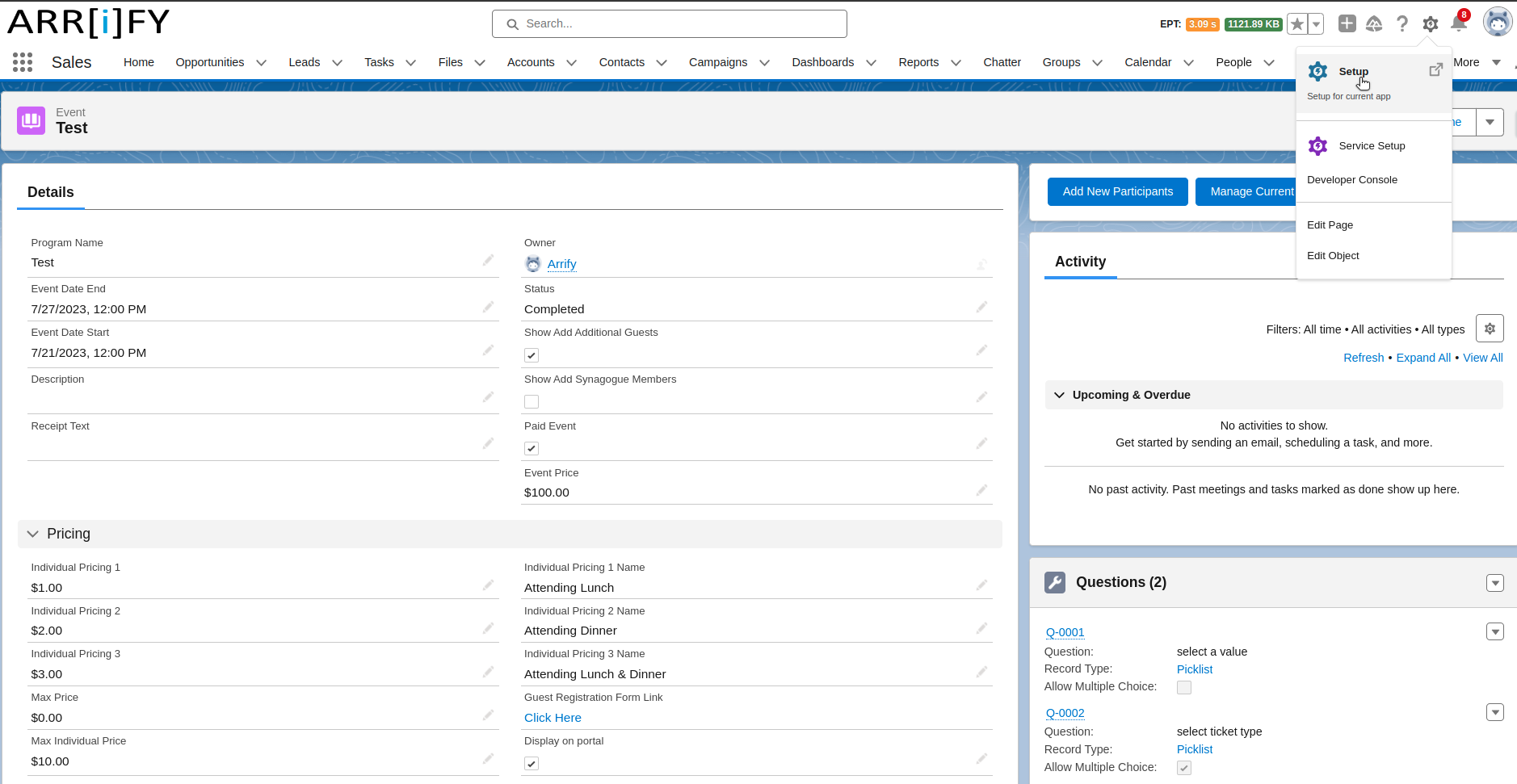
Log in to your Salesforce account at Salesforce.com.
Navigate to the Setup page by clicking on the gear icon in the upper-right corner and selecting “Setup” from the drop down menu.
Quick Find Path Settings
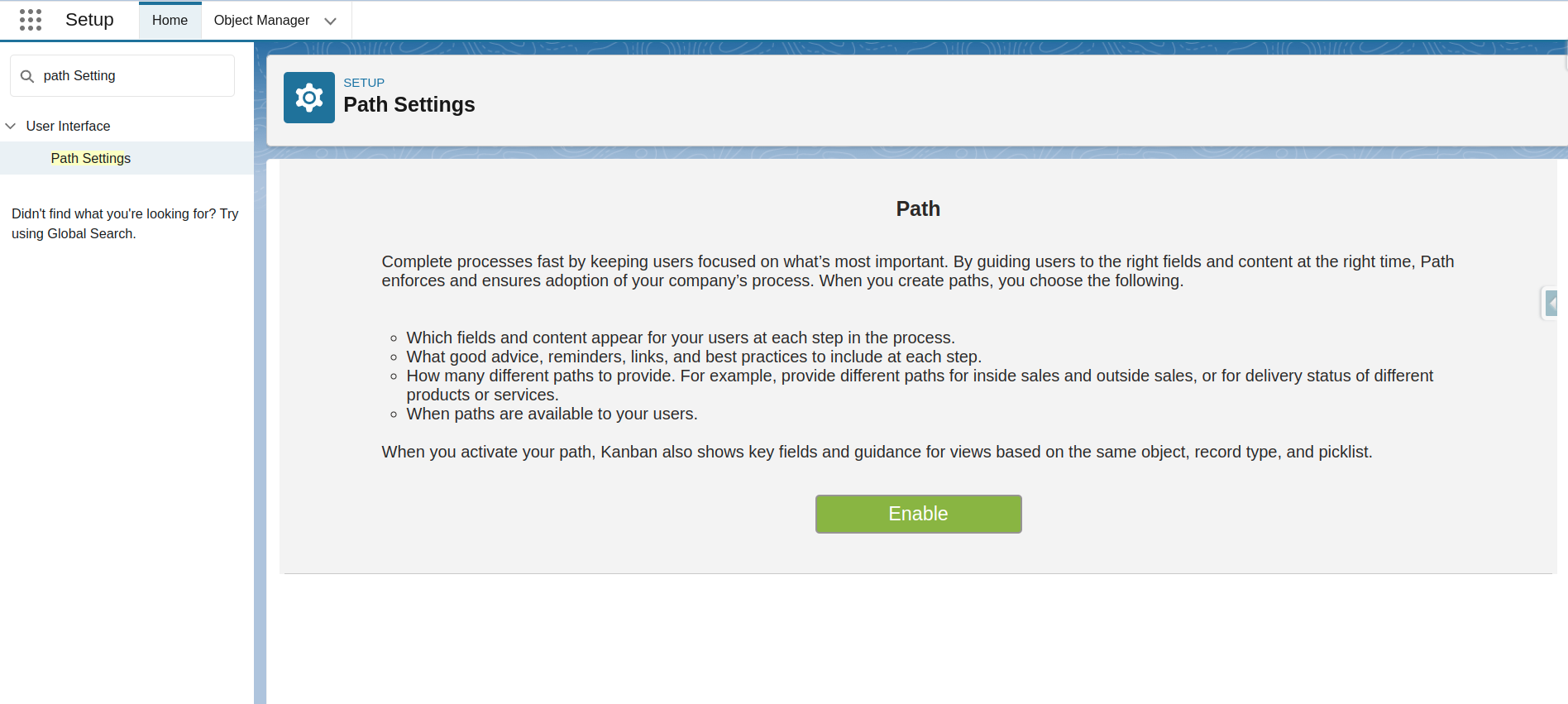
In the Setup page, use the “Quick Find” search bar to find “Path Settings”
Click on “Path Settings” from the search results.
On the Path Settings page, click the “Enable” button to activate Path to users.
Create New Path

Once you enable the Path feature from the Path settings, a “New Path” button will be available. Click on this button to create a new Path.
Also you will have the option to check the “Remember user’s Path preferences” checkbox with the help of the provided help text.
Define Path Picklist Values
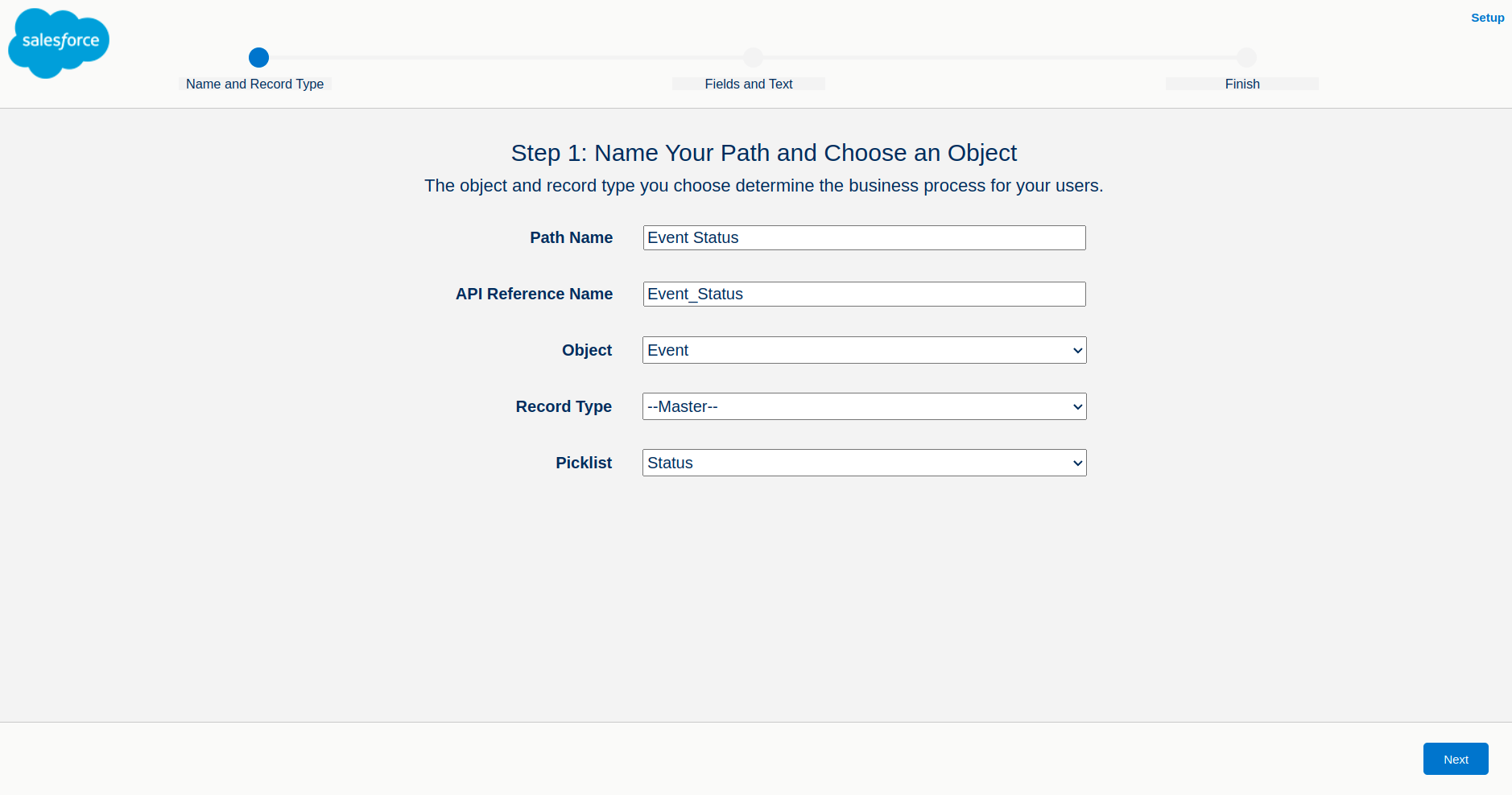
Give your Path a descriptive name and define Object, Record type & Picklist values for users, then click on “Next”.
Configure Guidance for Each Stage
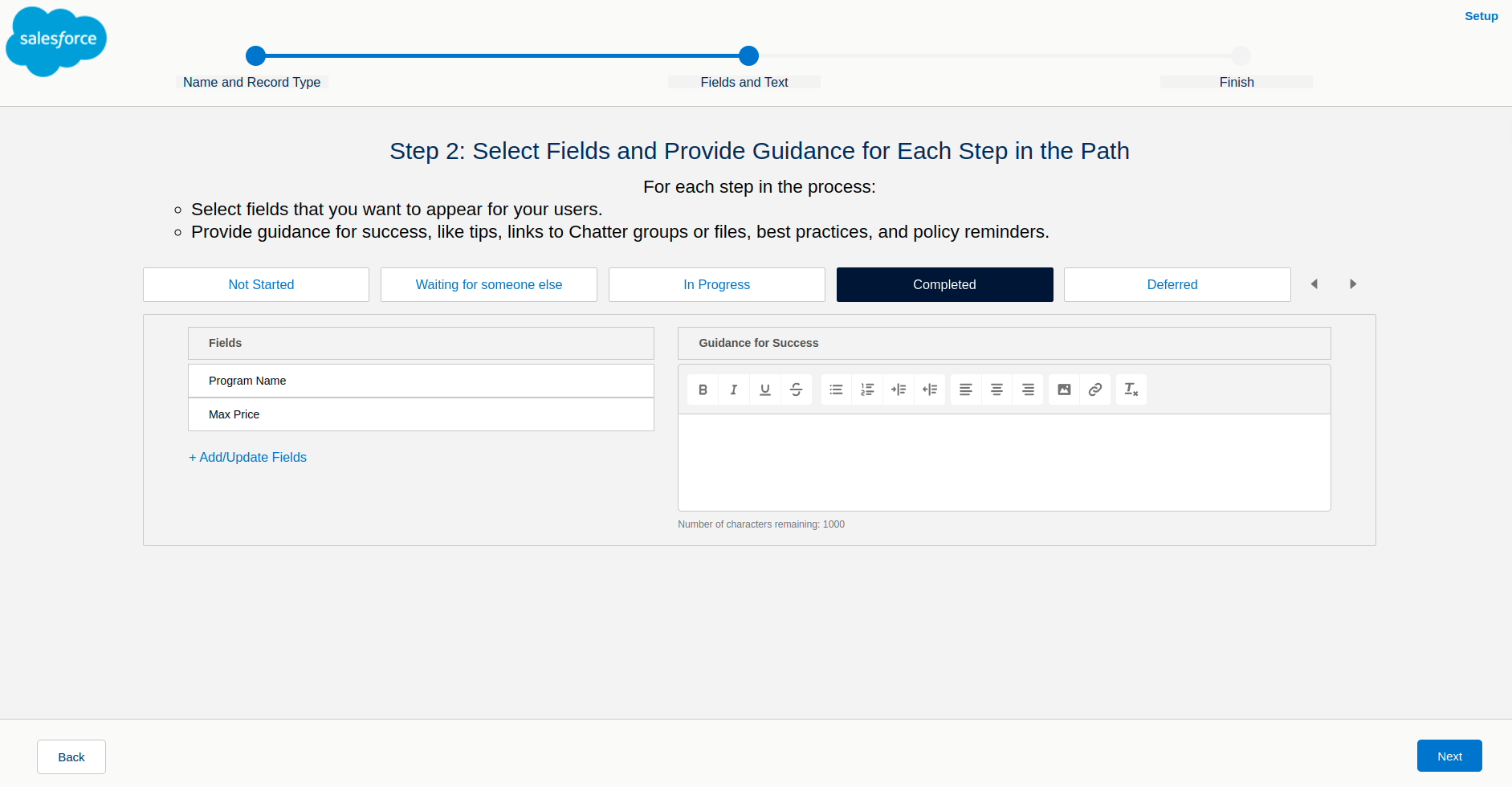
For each stage, you can provide guidance, instructions, or key fields that need to be filled in at that stage. This will help guide your sales reps through the process.
For example, in the “Completed” stage, you can include essential fields that will be displayed when this stage is selected.
Click on “Next”.
Activate Your Path and Enable Celebrations
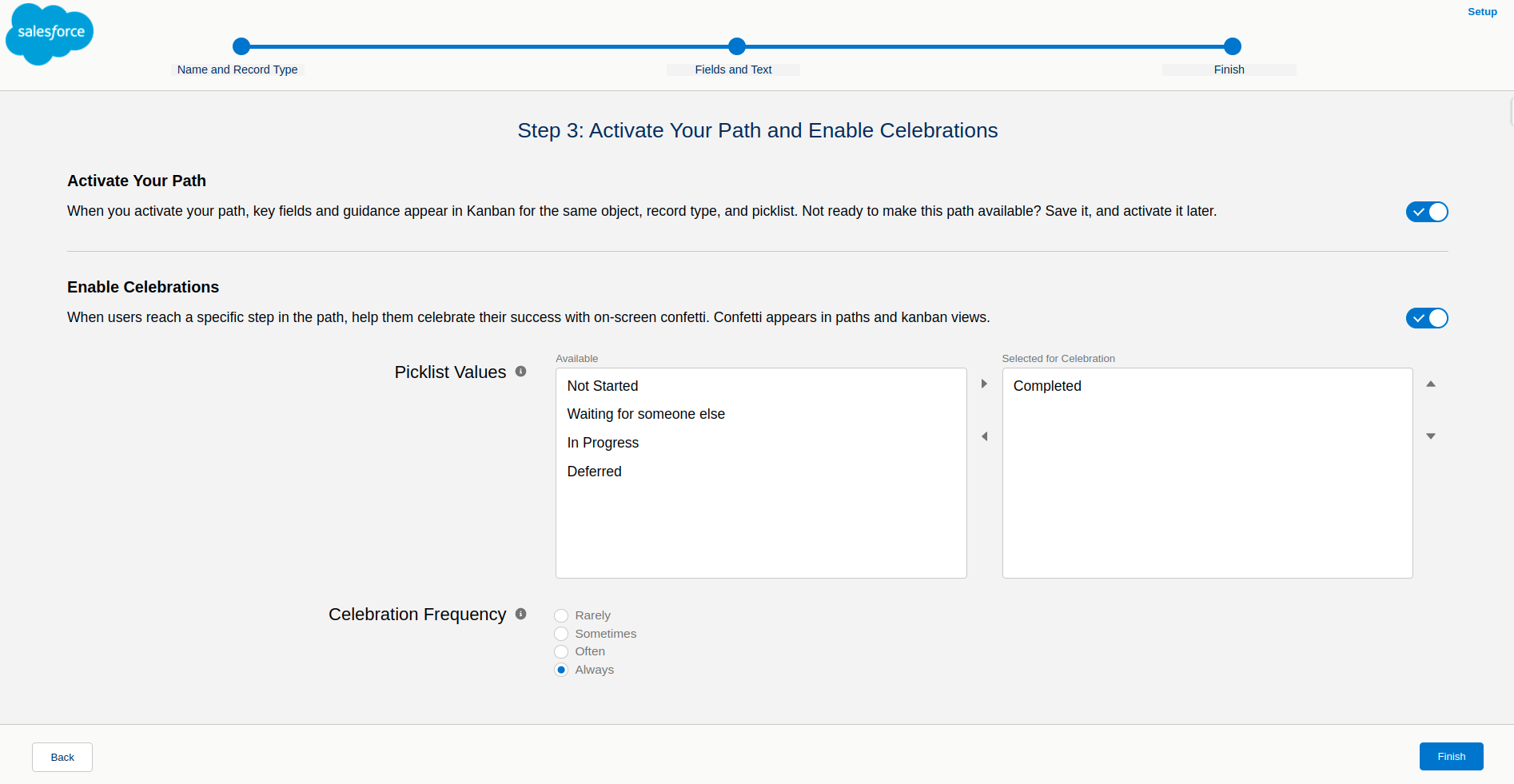
Once you’ve configured the Sales Path, “activate” it to make it visible to the users on the selected Salesforce object’s record page layout.
Also you can add picklist values to celebrate their success by “Enable Celebrations”. When users reach certain stages in the path, they’ll be greeted with on-screen confetti to celebrate their progress.
Click on “Finish”.
Path Created
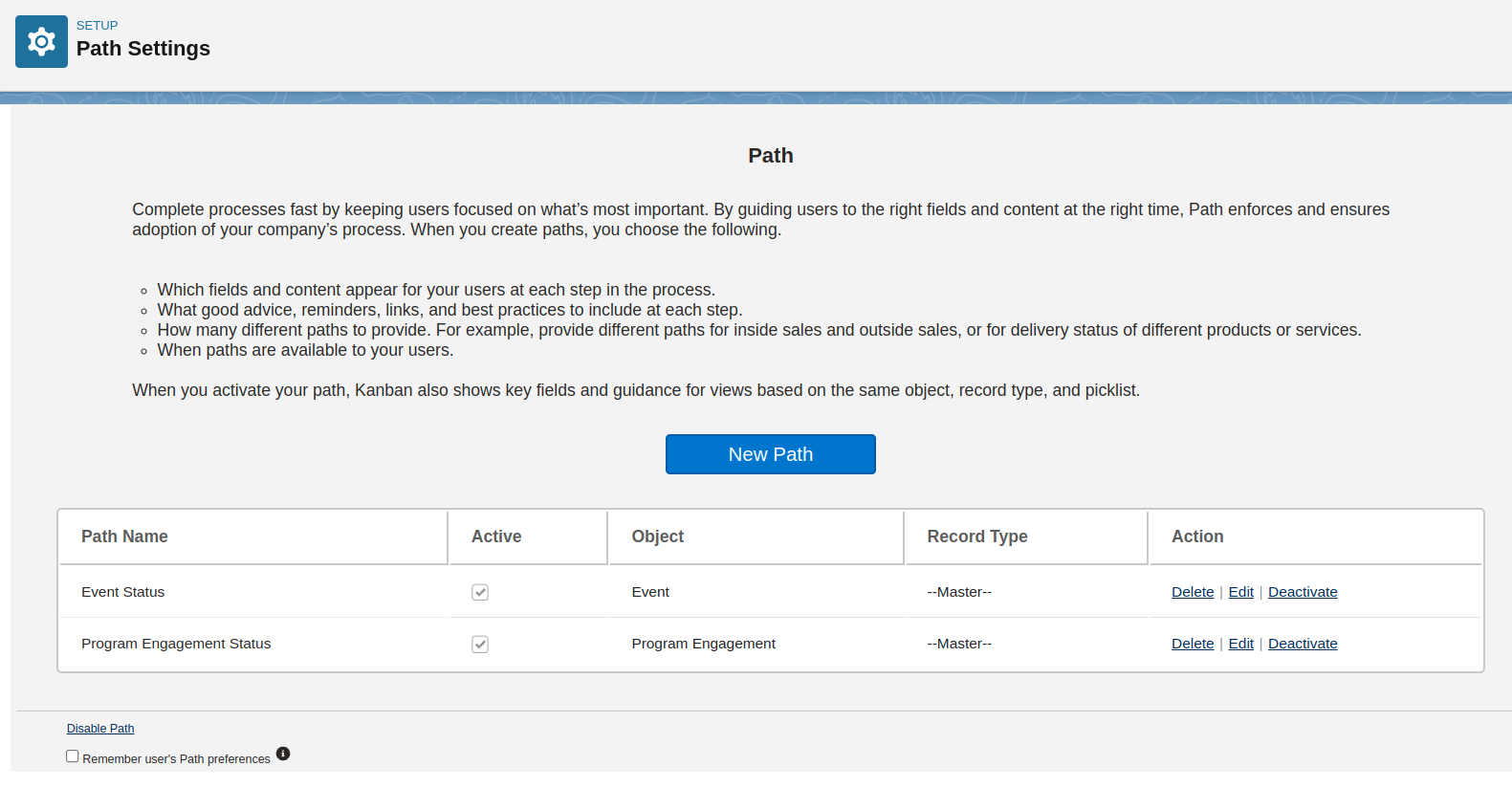
Once you have configured the Sales Path for a specific object, the next step is to review and test it on the object’s record page layout.
Navigate to the Object’s Record Page

Navigate to the Home page and access a record of the specific object
For example, if you configured the Sales Path for Event object, open an Event record.
Well, The Sales Path is not automatically added to the page layout by default. To include it on the layout, you must edit the page layout and add the Sales Path component manually.
Navigate to the “Edit page” by clicking on the gear icon in the upper right corner and selecting “Edit Page” from the drop down menu.
Edit the Page Layout
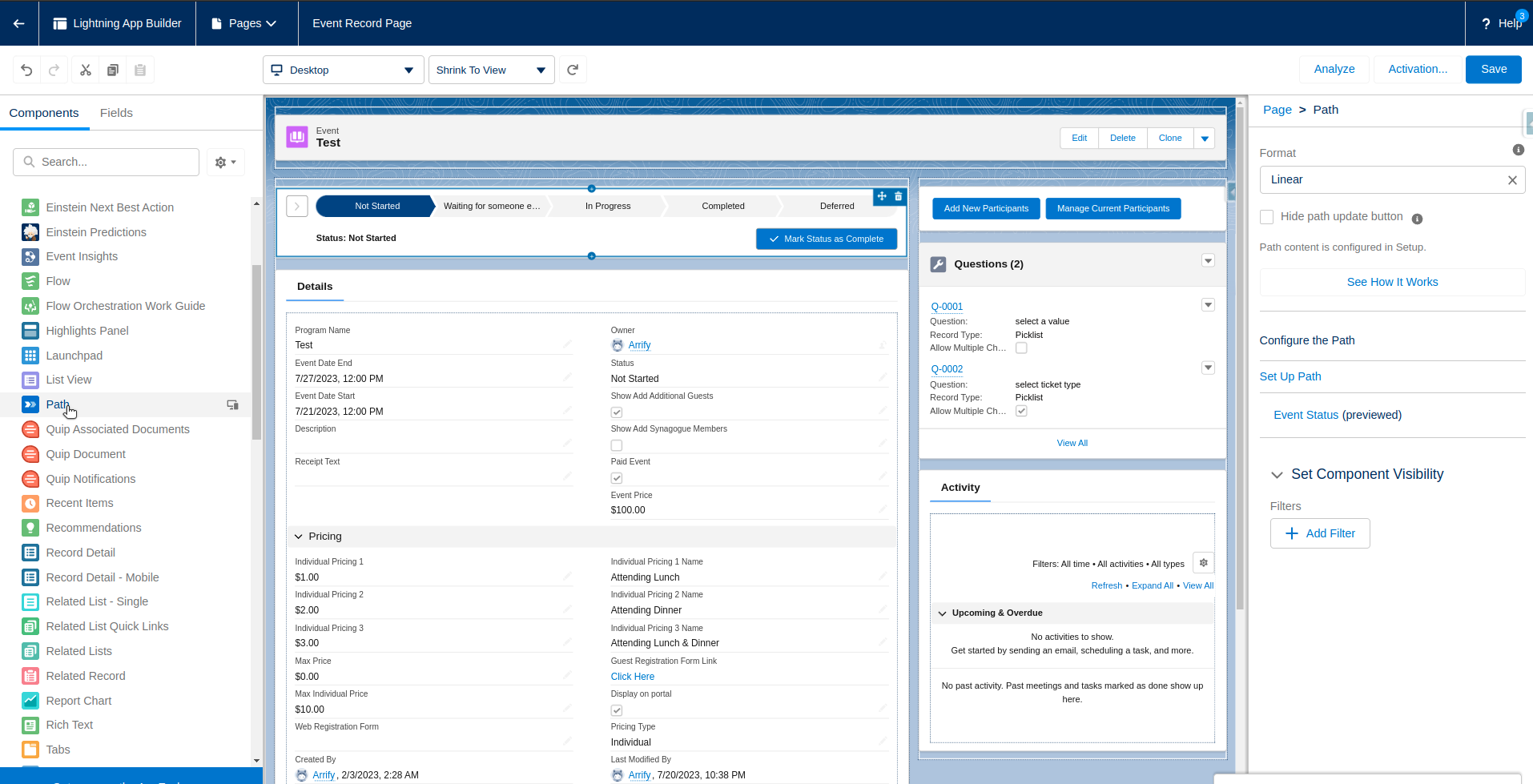
Within the Page Layout Editor, you will see a selection of available components listed on the left side. Look for the “Path” component and drag it to the desired location on the page layout.
After configuring the Sales Path to your preference, click on the “Save” button to apply the changes to the page layout.
Testing Path on Record page
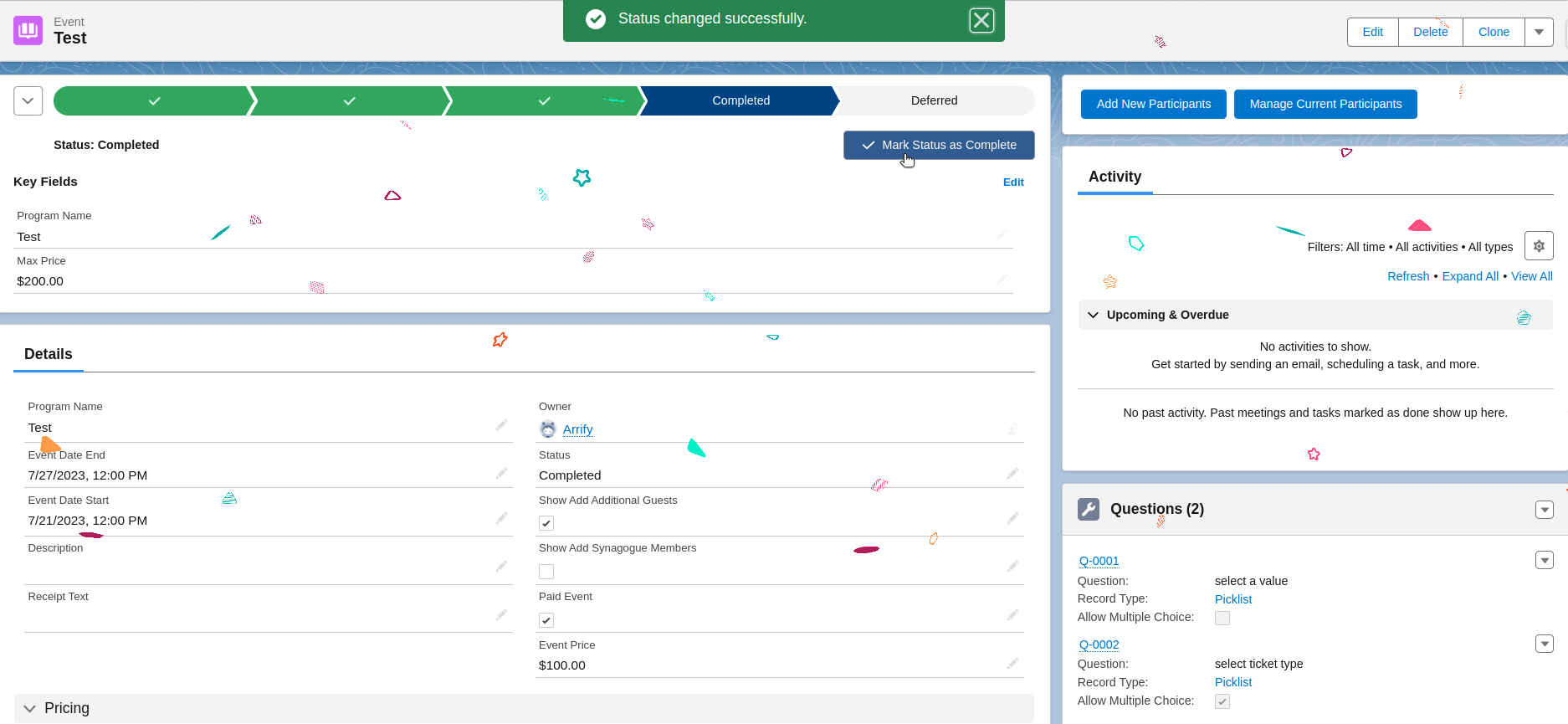
After editing the page layout and adding the Sales Path component, go back to a record of the specific object you made changes for. Once you access the record page, you will now see the Sales Path displayed.
To confirm the success celebration feature, verify that the Sales Path is marked with the specific value that was selected during the configuration process.
Final Thoughts and Recommendations
Sales Path is a really useful feature in Salesforce, and it offers many benefits for sales teams. It helps by giving clear guidance and showing each step of the sales process in a way that’s easy to follow. This not only makes the team more efficient but also helps them stick to the right practices and rules.
If a company is thinking about using Sales Path, it’s important to set it up in a way that fits their specific sales methods and the kind of business they do. This means making sure it works well with the company’s goals and what the sales team needs. It’s also important to keep the sales team up to date with regular training and updates on Sales Path.
